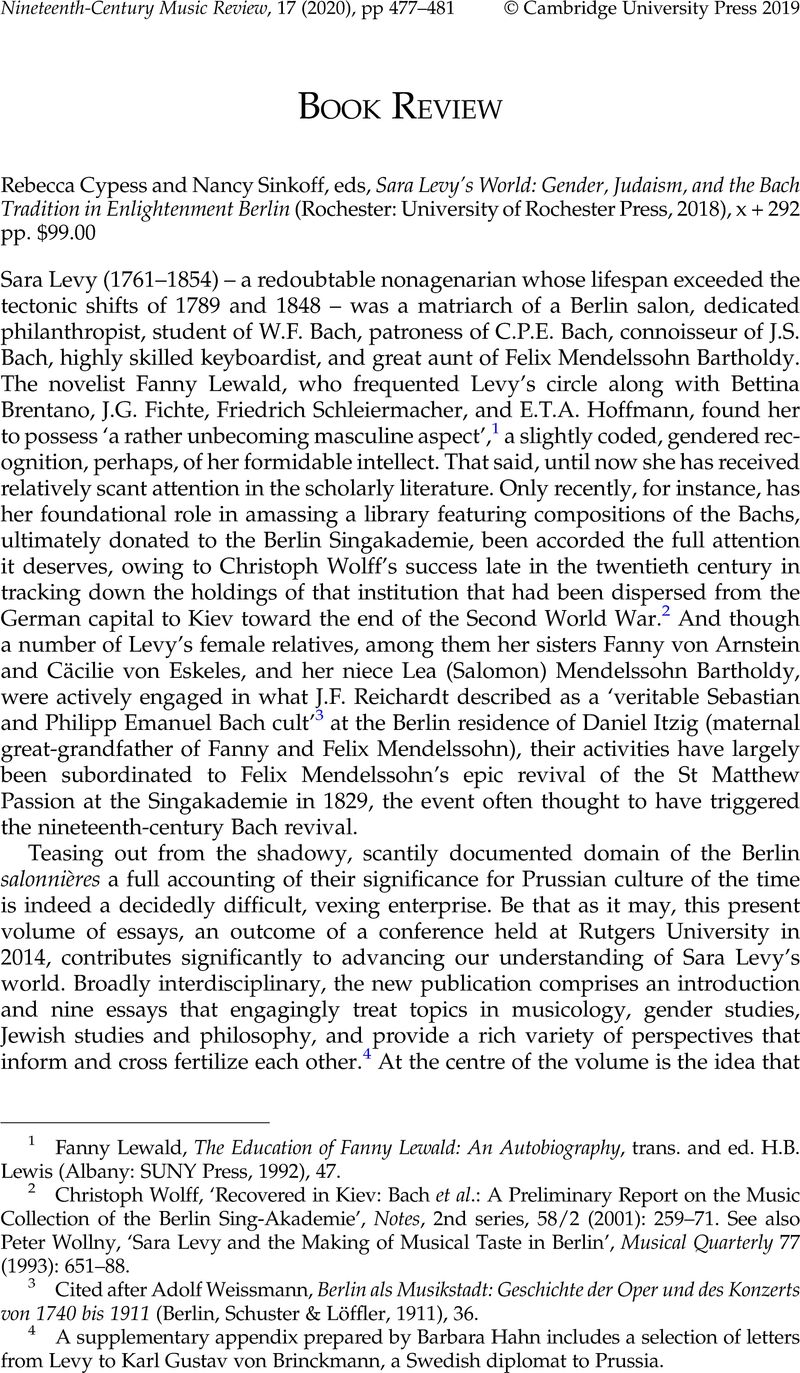No CrossRef data available.
Published online by Cambridge University Press: 27 August 2019

1 Lewald, Fanny, The Education of Fanny Lewald: An Autobiography, trans. ed., and Lewis, H.B. (Albany: SUNY Press, 1992), 47Google Scholar.
2 Wolff, Christoph, ‘Recovered in Kiev: Bach et al.: A Preliminary Report on the Music Collection of the Berlin Sing-Akademie’, Notes, 2nd series, 58/2 (2001): 259–71CrossRefGoogle Scholar. See also Wollny, Peter, ‘Sara Levy and the Making of Musical Taste in Berlin’, Musical Quarterly 77 (1993): 651–88CrossRefGoogle Scholar.
3 Cited after Weissmann, Adolf, Berlin als Musikstadt: Geschichte der Oper und des Konzerts von 1740 bis 1911 (Berlin, Schuster & Löffler, 1911), 36Google Scholar.
4 A supplementary appendix prepared by Barbara Hahn includes a selection of letters from Levy to Karl Gustav von Brinckmann, a Swedish diplomat to Prussia.
5 One who did a decade or so later was the young Felix Mendelssohn, who discovered in Bach's 1721 presentation autograph a passage with parallel fifths in the first movement, causing C.F. Zelter to boast about his student's ‘hawk eyes’ to Goethe. See Todd, R. Larry, Mendelssohn: A Life in Music (New York: Oxford University Press, 2003), 46Google Scholar.
6 Acis Productions APL00367.
7 The author includes in this category arrangements for two keyboards in Levy's library of other, non-duet works such as J.S. Bach's organ trios, BWV 52–30.
8 The chapter is reprinted from Helfer, Martha B., The Word Unheard: Legacies of Anti-Semitism in German Literature and Culture (Evanston: Northwestern University Press, 2011)CrossRefGoogle Scholar.
9 Magnes Collection of Jewish Life, University of California, Berkeley.
10 The latter's title role was understood to represent Moses Mendelssohn.